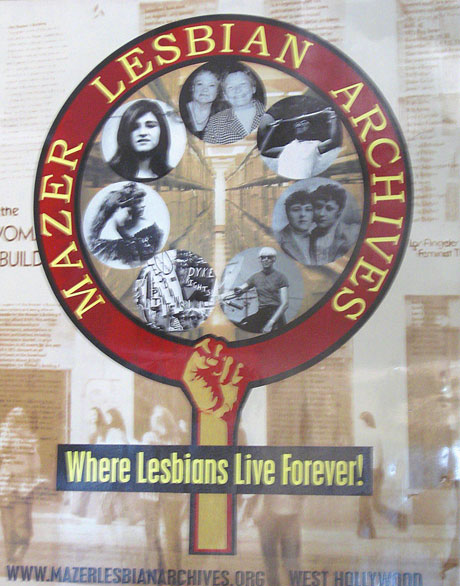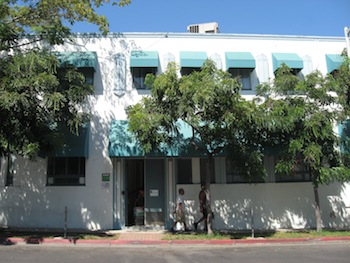
[dropcap]T[/dropcap]hey may be small in number, representing about 4 percent of the population, but members of West Hollywood’s lesbian community are making a push to show that the city is more than just “Boystown.”
Their attitudes are as varied as the women themselves. Some are content with the status quo in the city, while others display a hint of betrayal.
“This city does not support lesbians!” shouted activist Ivy Bottini at a recent Lesbian and Gay Advisory Board meeting.
Bottini, a long-time West Hollywood resident, wants to see the city make more of an effort to engage women, particularly lesbians. She appears to have an ally in City Councilmember John D’Amico.
“I think I wouldn’t disagree (with Ivy). The city probably doesn’t do enough,” said D’Amico, the only council member to respond to repeated inquiries about the issue. “But I would say that the city certainly has tried and will continue to try to do as much as we can to make that a reality.”
“I came here to West Hollywood because I knew this was a gay town,” Elisabeth Sandberg said. “Even if the city can do more as a city, the individual places and people, in my experience, are very welcoming.”

The city has made an effort to engage the lesbian population. The Human Services Commission recently launched SHE, a monthly forum for lesbians living in West Hollywood, and the city has long been a key supporter of the June L. Mazer Lesbian Archives, located in the Werle building.
But ask outsiders, and maybe even some residents, about the city’s lesbian community and you might receive a quizzical look.
This wasn’t always the case, said Angela Brinskele, director of communications at the Mazer archives. “Historically, some of the biggest lesbian groups that were most successful were in West Hollywood, so it’s odd now that everyone calls it ‘Boystown.’”
Brinskele is referring to Southern Californian Women for Understanding (SCWU) and Connexxus. SCWU was formed in the mid-1970’s as an organization focused on “enhancing the quality of life for the lesbian community” and had multiple chapters in the greater Los Angeles area. Connexxus was a women’s center where lesbians living in the city could come for workshops, support groups or simply to socialize. The center was partially sponsored by the city, and operated from January 1985 to June of 1990.
There used to be a plethora of lesbian bookstores and coffee shops sprinkled throughout the city, but they have all since closed.
“See that nail shop,” Sandberg said, pointing across the street. “That used to be Little Frida’s. It was a space where women could congregate for coffee, hang out or use it for seminars.”
Little Frida’s closed more than a decade ago.
Lesbians from around Los Angeles continue to gather at the annual Dyke March, part of West Hollywood’s Pride activities each June, and places like The Palms, which has operated as a lesbian bar for four decades, are still around, but not every woman wants to spend time socializing in bars.
That essentially leaves the Mazer archives as the only other option.
“We want to reach out to the community, they want us to do way more events than we do because we’re it,” Brinskele said. “That’s what they always say. ‘You’re it. You’re all we’ve got left.’”
But while the archive is a valuable historical resource, board member Marilee France says it is not an ideal meeting place.
“Our mission is to be an archives and supportive to the community,” she said. “We’d love to see a lesbian space that we could be a part of, not run.”
There is a movement afoot to bring the city back to what D’Amico calls the “critical mass” of the 1980’s and 1990’s – a time full of activism within the LGBT community. Serious consideration is being given to creating a public lesbian space, something he supports.
“For 10 years people’s eyes were off the ball in the gay part of town, believe it or not,” D’Amico said. “The city was focused on other things and now I think it’s time to change and focus on some new things, this among them.”

The creation of a public space is still in the “idea” phase. One possible location is a space next to the Mazer archives. However, this location has its challenges. The proposed space is located on the second floor and the elevator has been nonfunctional for years.
Sandberg has a different type of location in mind. “My personal preference would be something not on the second floor. I would love street visibility,” she said.
She would also like to see local business owners get involved.
Whichever location is chosen, the women in the community already have ideas for the space.
“It could be a conglomerate of women coming together and wanting to open a space that is available for lesbians to use, whether it happens to be: art exhibits, poetry readings or discussions,” Marilee France said.
Almost everyone in the lesbian community agrees on one thing, they want to increase the visibility of lesbians in the city.
“This is not ‘Boystown,’” Sandberg said. “Statistically it is, but in terms of the feel, the politics and the ethos, it’s much, much more inclusive. There are lesbians here, we’re alive and well.”
